- Regular price
- $18.99
- Regular price
-
- Sale price
- $18.99
- Unit price
- per
Lemon balm, a member of the mint family, is a lovely mild herb named for the lemony scent of its leaves. Originally grown in South Europe, lemon balm is often used in combination with other herbs and is frequently found in poultry and fish dishes, desserts, and teas. It also makes a nicely scented sachet. Plant one at the edge of a gate so that when the gate opens and closes the lemony scent fill the air. Like other types of mint, it likes to spread, so a container is a great choice.
Read Less
Quantity:
Product Availability:
In Stock
Frequently bought together
Key Highlights
- LightPartial Shade
- Plant Spacing20 to 24 inches apart
- Plant HeightMedium (24-48″)
- Planting TimeSpring, Summer
- Annual/PerennialPerennial
- Pot MaterialGrowers
- Culinary UseFor lemon flavor in a variety of dishes and teas
- SKU202018
How to Grow
Growing lemon balm is a great way to always have a lemon-flavored and scented herb on hand for recipes, teas, bouquets, and more.
View Growing Lemon Balm Guide
Delivery Information
Bonnie Plants are carefully packed for secure delivery to your home. All plants are shipped safely in packaging that's 100% recyclable.
Shipping may not be available for all plant varieties.

Support
Can’t find the answer you’re looking for? Visit our FAQs or chat with our friendly team.
Where do my Bonnie Plants® come from?
Not far from where you are! We have over 70 growing stations spread across the country, so our plants don’t have to travel far to make it to your garden. That means less time spent in transit, which is better for the plants and for the planet, too. What’s more, each growing station grows varieties that tend to perform well in that particular region, so you don’t have to wonder whether the Bonnie veggies and herbs you buy are suitable for the area you live in.
Does Bonnie sell GMO plants?
No. Every plant we sell is grown from non-GMO seed.
How do I know if a plant is suitable to grow in my area?
Most of the vegetable and herb plants we sell on this site can be grown outdoors throughout the Continental US - however it is important to transplant your starter plant at the right time based on the weather and climate in your area.
Many of our herb plants can also be grown indoors so long as you have sufficient light and water. If you grow herbs indoors, you will still need to transplant your herb plants into properly sized containers with added potting mix.
What is a USDA Hardiness Zone?
The 2012 USDA Plant Hardiness Zone Map is the standard by which gardeners and growers can determine which plants are most likely to thrive at a location. The map is based on the average annual minimum winter temperature, divided into 10-degree F zones.
To learn more, visit https://planthardiness.ars.usda.gov/
How do I care for my plants once I receive them?
Your plant will come with both a care sheet and a plant tag, which gives you information on plant spacing, watering, sunlight and other important considerations to get you started.
Bonnie also has in-depth "How to Grow" guides available here.
How often do I need to water my plants?
A good rule of thumb is an inch of water per week, either by rain or watering; in arid climates, double that. In hot weather, vegetables need even more water, up to about a half an inch extra per week for every 10 degrees that the average temperature is above 60 degrees. You can measure an inch of water by putting a rain gauge or other container under your sprinkler, soaker, drip, or other watering system. You’ve applied an inch of water when the vessel collects water an inch deep. Container gardens may need to be watered more frequently than in-ground garden beds, so check the soil each day and add water if the top inch or so of potting soil is dry.
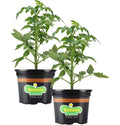



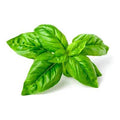 Herbs
Herbs
 Vegetables
Vegetables
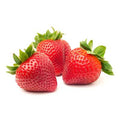 Fruit
Fruit
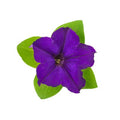 Flowers
Flowers
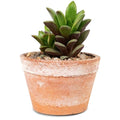 Succulents
Succulents

